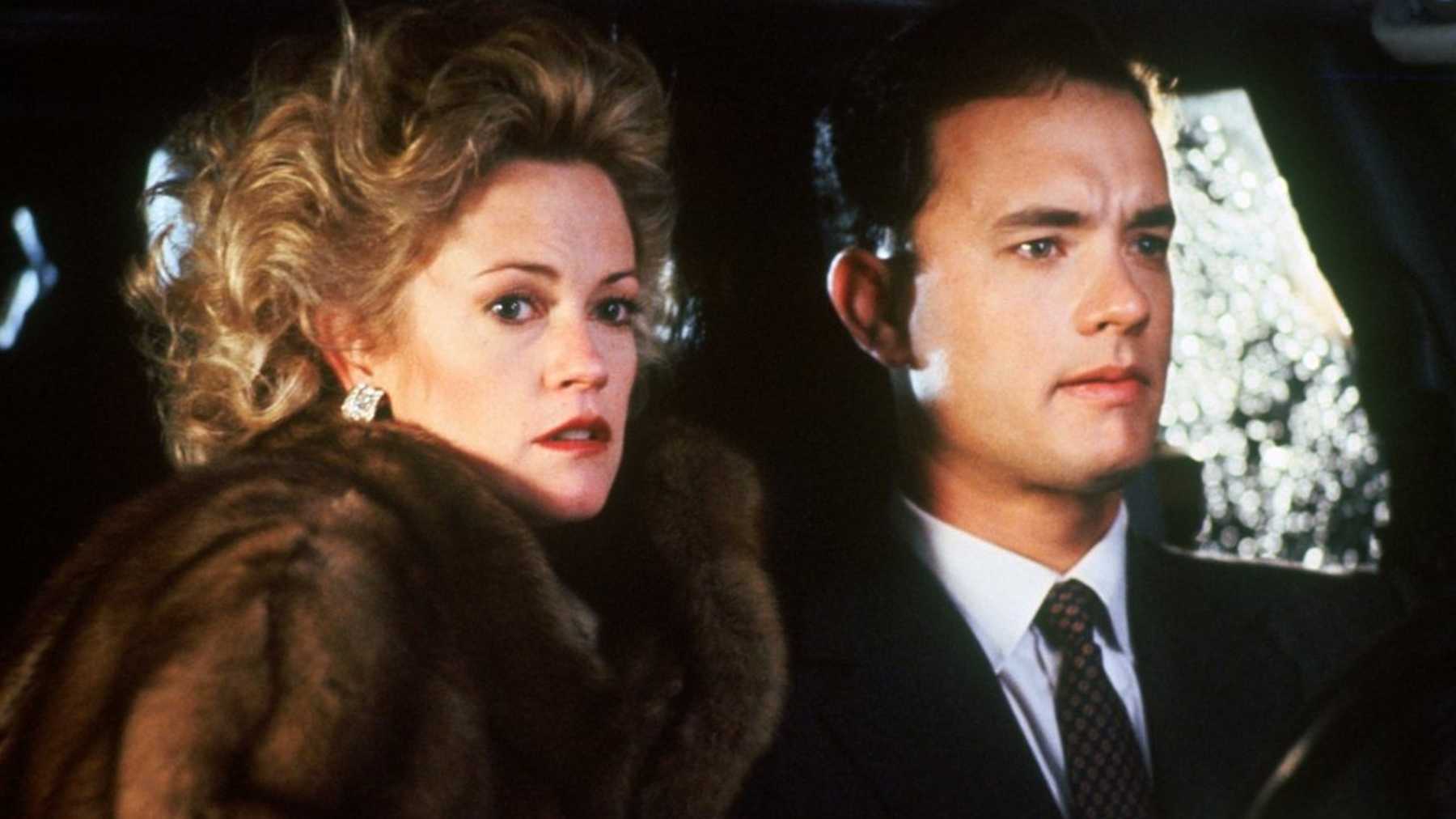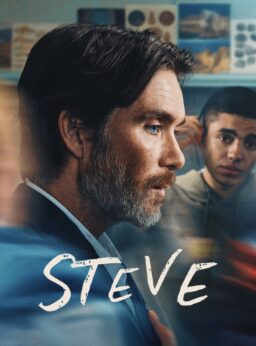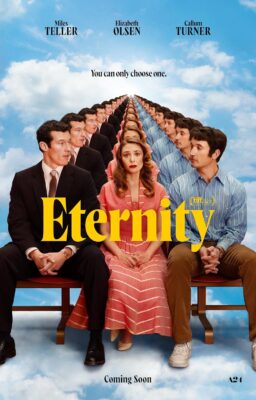If you thought that this Christmas season was a disastrous one by Hollywood standards, spare a thought for what transpired during this same time period exactly 30 years ago. Unlike now, theaters were open in 1990, and the studios all had expensive and heavily hyped items hitting the multiplexes, eager to capture the attention and ticket money of millions who needed a break from the holiday rush for at least a couple of hours. In this case, however, the screens were full, but the seats were empty.
Of course, Hollywood has always had dry spells from time to time but the thing about this period that sent chills down the spines of observers is that the films that seemed to have been designed specifically to become instant blockbusters were the ones that were tanking the hardest. For example, putting “Crocodile Dundee” star Paul Hogan in a sweet-natured fantasy-comedy must have seemed like a no-brainer when it was going into production but the result, “Almost an Angel,” essentially torpedoed his short-lived career as a bankable movie star. More established stars like Clint Eastwood and Robert Redford were able to survive their respective flops, “The Rookie” and “Havana,” but the fact that those films failed to reach audiences with projects that were clearly in their personal wheelhouses (violent cop thriller and lush romantic melodrama) certainly gave many people pause. In the case of “The Godfather Part III,” the film wasn’t necessarily a flop by ordinary standards—audiences did come out to see it and it would be nominated for a bunch of Oscars—but when compared to the towering legacy of its predecessors, it could not help but come across as a commercial and artistic disappointment in the eyes of many.
All of those stumbles pale in comparison to the fate that befell “The Bonfire of the Vanities,” Brian De Palma’s heavily hyped adaptation of Tom Wolfe’s 1987 satirical novel of contemporary New York that began life as a serial in Rolling Stone and went on to become one of the biggest publishing phenomena of its era. Here was a film that had everything going for it—the name recognition that comes from being a story based on a book that seemingly everyone had either read or at least pretended to have read, a talented maverick director who was then still only a couple of years removed from what had been the biggest commercial success of his career at that point, a cast headlined by some of the biggest stars around—and the heavy assumption that it would be a huge box-office hit and most likely become a major player in that year’s Oscar derby. And yet, when it was finally released, it proved to be such a massive failure on every level—critics mostly hated it, audiences avoided it like the plague, and there were no Oscar nominations to be had (though it did pick up several of those silly Razzie nominations)—that all that people could do was just look at the smoking wreckage and wonder how such a seemingly sure-fire project could have gone so very wrong.

A year later, they found out. As it turned out, De Palma had granted Wall Street Journal film critic Julie Salamon full and unfettered access to all aspects of its production so that she could write a book about transforming “The Bonfire of the Vanities” from the page to the screen. The resulting book, The Devil’s Candy, described all the behind-the-scenes activities—ranging from interference from studio executives desperate to make a story in which all of the characters were vain, venal and unlikable (albeit hilariously so thanks to Wolfe’s expert skewering of their vanities and foibles) into something more conventionally audience-pleasing, to difficulties with co-star Bruce Willis, whom the studio had insisted on casting in a key role despite his unsuitability for it because of his star status and who reportedly disrupted production due to various ego-driven demands—in detail as unsparing as the kind that Wolfe deployed in his own book. Unlike the film that inspired it, the book was a critical and commercial hit—with the possible exception of the “Heaven’s Gate” chronicle Final Cut, it is perhaps the definitive account of the contemporary filmmaking process and how it can all go so very wrong in so very many ways. The book’s success also ensured that while other bombs would soon be forgotten, “The Bonfire of the Vanities” would live on in infamy as one of the most disastrous and misbegotten films in Hollywood history.
And yet, is it possible that the film is not entirely deserving of that reputation? Is there a chance that, 30 years down the line, enough time has passed and rubble has cleared away to reveal it to be an undeniably flawed but nevertheless ambitious attempt to film a book that many had considered to be all but unfilmable? Could it be that some of the very elements that were so heavily criticized back in 1990 now oddly work in its favor after all? Is it possible that, despite all the glaring artistic mistakes and lapses in judgement and missed opportunities on display, “The Bonfire of the Vanities” is, if not an unsung masterpiece, a wobbly-but-intriguing work that might actually be better than its reputation as an all-time disaster might suggest?
Possibly.
The film tells the story of Sherman McCoy (Tom Hanks), a modern-day Master of the Universe who, as the narrative opens, seems to have it all—a wildly lucrative job as a Wall Street bond trader, a lavish apartment, a socialite wife, Judy (Kim Cattrall), an adorable daughter (Kirsten Dunst in one of her first roles) and, most significantly for the purposes of the story, a gorgeous mistress in the form of Maria Ruskin (Melanie Griffith), the hot-to-trot trophy wife of wealthy businessman Arthur Ruskin (Alan King). One night, after picking Maria up at the airport to drive her to the apartment that she sublets on the sly for her assignations, Sherman winds up missing the off-ramp into Manhattan and a wrong turn lands him in the “war zone” that is the South Bronx. While trying to remove a tire from the road in order to get back on the expressway, Sherman is approached by two black teenagers and a panicking Maria takes the wheel. In the ensuing chaos, Maria goes into reverse and appears to hit one of the two teens, Henry Lamb, before she and Sherman speed away. A remorseful Sherman wants to report the incident to the police, but Maria talks him out of it by reminding him that doing so would expose their affair (which he has already inadvertently revealed to Judy) to the gossip-hungry world. And, besides, she was the one driving the car at the time anyway.

Things go into overdrive when Henry, who was initially treated at the hospital for a broken wrist, is diagnosed with a concussion and slips into a coma, though not before giving a description of the car and a partial license plate number. While the victim lies unconscious and is deemed not likely to recover, a number of people from all walks of life use his plight to further their own agendas. The Reverend Bacon (John Hancock), a firebrand preacher with just a slight resemblance to Al Sharpton, uses the accident as a way to call attention to the racial inequities in the system and to gain more publicity and funds for himself in the bargain. Peter Fallow (Willis), a dissolute journalist working for a local tabloid, stumbles into the story and his coverage only fans the flames further within the black community. Abe Weiss (F. Murray Abraham), the Bronx District Attorney currently in the middle of a tough re-election year, is painfully aware that most of the people that he prosecutes are black or Hispanic and when it comes to attention that Sherman—the very epitome of white privilege—was very likely the hit-and-run driver, he instructs Assistant D.A. Jed Kramer (Saul Rubinek) to make an example of him to show the public that his office treats everyone the same.
As a result of this confluence of events, the seemingly invincible Sherman is stripped of everything that once made him who he was—Judy leaves him and takes their daughter with her (though not until after hosting a lavish dinner party on the very same day he is arrested and arraigned), he loses his job, the co-op board kicks him out because of the protestors marching in front of their building, and Maria flees the country when he begs her to come forward and admit that she was driving the car. Ironically, the only person who now seems to be in his corner is Fallow, who helps Sherman escape from the courtroom mob one day without identifying himself. When Fallow comes into possession of a tape recording that, while technically inadmissible, proves Sherman’s innocence, he sends it to him anonymously and Sherman has to decide whether or not to falsely claim that he made the recording (making it admissible) in order to save himself. It all culminates, as such stories must, with a courtroom sequence in which everything comes to a head under the watchful eye of Judge Leonard White (Morgan Freeman), who senses deep down that the case is a piece of garbage. Judge White eventually concludes matters during a big climactic speech in which he excoriates all of those who have tried to use the accident for their own purposes and admonishes the observers to “be decent” to each other.
In essence, there are two different movies at the center of “The Bonfire of the Vanities” fighting for control, and whether you wind up liking the film or not will depend to an enormous degree on which one you choose to focus on. If you—like most people—are looking at it strictly as an adaptation of Wolfe’s novel, then yes, it does not work for any number of reasons. For starters, Michael Cristofer’s attempt to telescope Wolfe’s sprawling narrative into a screenplay for a film running a hair over two hours is kind of a mess—it’s little more than an assemblage of famous scenes from the book strung together. The script is also hampered by the decision, evidently urged upon De Palma and Cristofer, to tone down the novel’s darkly satirical and often racially charged tone into something more palatable, and to make the characters of Sherman and Fallow more likable so as not to turn off the fanbases of the actors playing them. The obvious problem is that once you remove the bite from “Bonfire,” there really isn’t much left to it. This becomes especially obvious during the big final speech from Judge White demanding the return of decency, a clumsy attempt at imposing a moral lesson onto a story where such a thing has no business being.

Another major flaw with the film comes with the casting, an especially egregious flaw in this case because A.) this was a story in which casting just the right people was of exceptional importance and B.) because everyone who had read the book had very distinct ideas of who should be playing them. At the time, Hanks was on the rise and just coming off of his first Best Actor Oscar nomination for “Big” but was perhaps the furthest thing from the bloodless blue blood status climber that Sherman was meant to represent. (Mike Nichols, who had contemplated directing the film early on, suggested Steve Martin, De Palma later volunteered that John Lithgow would have been more effective, and the book’s fanbase seemed convinced that it was a role tailor-made for William Hurt.) Hanks is just too engaging throughout to be believed—the snotty playboy he portrayed in “Volunteers” was a more convincing take on this type of character in the long run.
That said, casting Hanks seems positively staid when compared to some of the other choices. For example, the role of Peter Fallow was originally written by Wolfe to be a past-his-prime Brit; John Cleese was originally sought out for the role and would have been ideal in it. When he turned it down, the role was made into an American and after an unsuccessful attempt at casting Jack Nicholson, Willis let it be known that he was interested and Warner Bros., looking for all the box-office assurance they could get, more or less forced him on De Palma. While Willis has clearly shown his range and abilities as an actor over the years, his work here is pretty bad—he spends the entire time smirking and never for a moment seems engaged with the character or the material.
As for the character of the judge presiding over the trial, he was originally written as an irascible old Jewish man named Myron Kovitsky, and was originally intended to be played by Walter Matthau until the studio balked at paying his million-dollar fee and instead went with the considerably cheaper Alan Arkin. That made sense, but once it dawned on people that there was not a single sympathetic black character in the story, the decision was made to recast the part with Freeman, who had just come off of “Driving Miss Daisy,” as the newly rechristened Judge Leonard White. Although he isn’t bad per se, he suffers under the weight of being the symbol of moral decency in a story bereft of such things and is saddled with that especially leaden final speech, which even he cannot quite pull off. Frankly, of all the major players, the only ones that might have been allowed to remain if there had been a last-second recasting of all the roles are Griffith, whose take on the over-the-top gold digger Maria actually fits the proceedings (though one wonders what might have resulted if Uma Thurman, her chief competition for the part, had gotten the role instead), and F. Murray Abraham, who is hilariously crass as the D.A. and makes you kind of wish that he had played the judge instead.

If you can somehow manage to remove all your memories and knowledge of the book from your mind—which was somewhat difficult back when the film first came out since it was pretty much the novel of its time—there is another and somewhat more interesting movie going on at the same time, and this is largely courtesy of the decision to have Brian De Palma direct. Then and now, he was most famous for his wildly audacious and often controversial suspense thrillers. The announcement that he would be doing “Bonfire” raised many eyebrows, with many assuming that he only got put on the list of potential directors because “The Untouchables” not only made a ton of money but proved that even an iconoclast like him could utilize his gifts to make an across-the-board blockbuster if he actually put his mind to it.
However, before he became famous for making grisly and twisty thrillers, De Palma initially made a name for himself directing highly acerbic satirical comedies such as “Greetings,” “Hi Mom,” and his first studio effort, “Get to Know Your Rabbit.” These were films that took on the big issues of the time—race, sex, class, the war in Vietnam, the JFK assassination—and skewered them all in wild and oftentimes outrageous ways that not even the passing of the decades has managed to dim. (The only exception is “Get to Know Your Rabbit,” a film on which he feuded with star Tommy Smothers and was eventually fired by Warner Bros. marking the first and last time he worked there until “Bonfire” came along.) While those earlier movies, “Rabbit” excepted, were made on tiny budgets on the streets of New York and with largely unknown actors (including a pre-fame Robert De Niro), “Bonfire” allowed him the chance to return to those roots, albeit with tens of millions of dollars at his disposal this time around. Some of the funniest scenes in the film, such as the one in which Weiss insists to his staff that he is not at all racist while at the same time coming across as nothing but, could have easily come from those earlier films and also come the closest to hitting the edgy tone found in the original material.
In bringing the story to the screen, De Palma, along with cinematographer Vilmos Zsigmond, utilized a highly stylized approach that favored the visual pyrotechnics for which he was famous. The film is full of elaborate camera moves (including an insanely intricate opening Steadicam shot of Fallow stumbling around backstage at a publishing party that runs for about five minutes without a cut) and weird closeups designed to make characters look even more grotesque than they already are. At the time, De Palma was criticized for employing such a seemingly unnecessary visual approach, but it actually fits the material. One of the key problems with anyone attempting to adapt Wolfe’s work to the screen is that it was his distinctive voice as a writer that made his work stand out so well, and it’s that voice that’s usually the first thing that gets lost during the adaptation process. While the screenplay awkwardly tries to invoke Wolfe’s prose by transforming it into narration from Fallow, De Palma’s visual gambits end up doing an unexpectedly effective job of finding a cinematic equivalent to Wolfe’s go-for-baroque literary style

And while the film ultimately feels more like a collection of scenes from the book than a fully satisfying narrative, some of those scenes are quite good and entertaining. The opening Steadicam shot is, not surprisingly, a technical wonder but it also serves as an inventive introduction into the rarefied realm of the story, and Willis’ physical performance throughout the sequence is easily his most genuinely engaging bit in the film. The stuff involving the Weiss character is amusingly cynical and offers a real hint as to what the film might have been like had the material not been tamped down so much in an effort to make it more likable and accessible. And the scene in which Fallow has a fateful dinner with Arthur Ruskin is also quite funny, though I wish that it had gone on longer as it did in the book. Even the miscasting of Hanks winds up paying off nicely at one point late in the proceedings when he finds himself wrestling with the idea of lying in court about the origin of the fateful cassette—now that Hanks has long since established himself as contemporary cinema’s unquestioned patron saint of decency and moral uprightness, it’s darkly funny to see him in a situation in which the only way for the truth to come out is to lie his ass off in court.
Considering how dated the once au courant material of “Bonfire” must seem to audiences today, the film’s viewers are primarily those who have just finished reading The Devil’s Candy and are using it as a sort of visual guide to that book and not Wolfe’s. Hell, even when one looks at it solely on the basis of being a De Palma film, his most ardent supporters would be hard-pressed to put it in the top half or even the top two-thirds of his cinematic output to date. However, for all of its mistakes and miscalculations and moments of utter garishness (including one scene involving actress Beth Broderick and a photocopier that is almost astoundingly tasteless), “Bonfire” is not only more interesting than its reputation might suggest. In its best moments, the film demonstrates both a personality and a real live-wire charge, despite all of the efforts from above to eliminate such things from the proceedings. Those willing to look at it through fresh eyes and properly adjusted expectations may be surprised to discover it’s not that bad after all.












